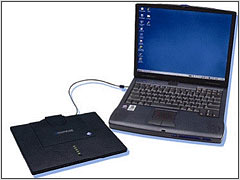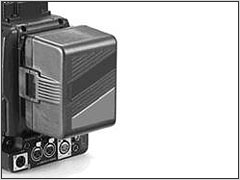 |
The US Department of Transportation has announced new safety rules relating to the storage of rechargeable Lithium batteries when flying to, from and within the USA. The new restrictions, effective from January 1st 2008, dictate that loose Lithium cells may not be packed in checked baggage under any circumstances - batteries installed in equipment are unaffected. Carry-on baggage may contain up to two loose batteries but only if there is no possibility of short-circuit, containing them individually within simple plastic bags or their original packaging is sufficient to prevent this and will satisfy inspectors.
Click here to visit for details of all current baggage restrictions
New US DOT Hazmat Safety Rule to Place Lithium Battery Limits in Carry-on Baggage on Passenger Aircraft Effective January 1, 2008
Passengers will no longer be able to pack loose lithium batteries in checked luggage beginning January 1, 2008 once new federal safety rules take effect. The new regulation, designed to reduce the risk of lithium battery fires, will continue to allow lithium batteries in checked baggage if they are installed in electronic devices, or in carry-on baggage if stored in plastic bags.
Common consumer electronics such as travel cameras, cell phones, and most laptop computers are still allowed in carry-on and checked luggage. However, the rule limits individuals to bringing only two extended-life spare rechargeable lithium batteries*, such as laptop and professional audio/video/camera equipment lithium batteries in carry-on baggage.
"Doing something as simple as keeping a spare battery in its original retail packaging or a plastic zip-lock bag will prevent unintentional short-circuiting and fires," said Krista Edwards, Deputy Administrator of the U.S. Department of Transportation's Pipeline and Hazardous Materials Safety Administration.
Lithium batteries are considered hazardous materials because they can overheat and ignite in certain conditions. Safety testing conducted by the FAA found that current aircraft cargo fire suppression system would not be capable of suppressing a fire if a shipment of non-rechargeable lithium batteries were ignited in flight.
"This rule protects the passenger," said Lynne Osmus, Federal Aviation Administration (FAA) assistant administrator for security and hazardous materials. "It's one more step for safety. It's the right thing to do and the right time to do it."
In addition to the new rule, PHMSA is working with the FAA, the National Transportation Safety Board, the Consumer Product Safety Commission, the battery and airline industries, airline employee organizations, testing laboratories, and the emergency response communities to increase public awareness about battery-related risks and developments. These useful safety tips are highlighted at the public website: http://safetravel.dot.gov.
*Examples of extended-life rechargeable lithium batteries (more than 8 but not more than 25 grams of equivalent lithium content):
 |
 |
Extended-life
130 watt-hour "universal" lithium ion
battery. |
Extended-life
160 watt-hour lithium ion battery. |
© Digital Photography Review
December 28, 2007